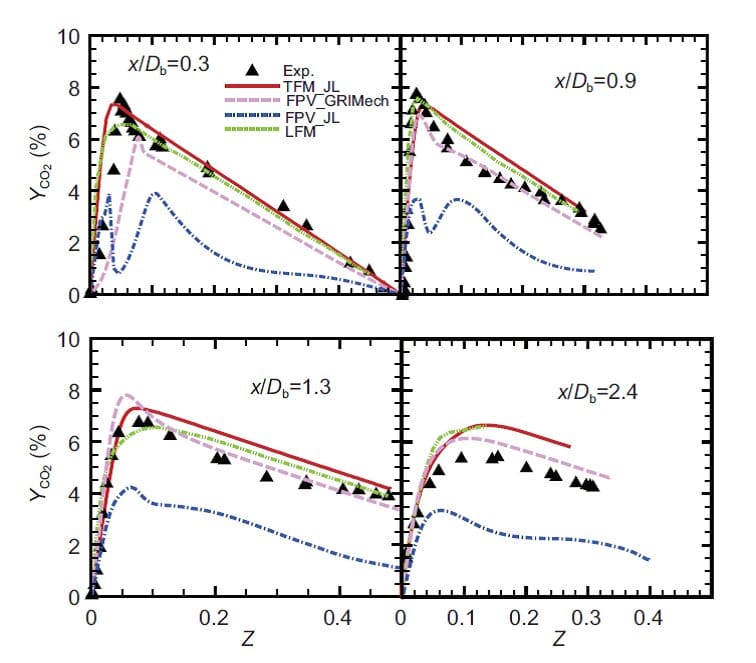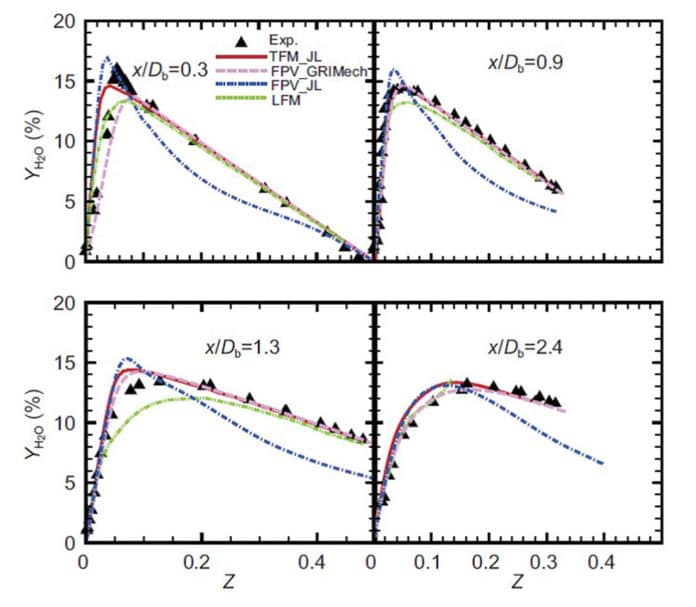In turbulent combustion, the collaboration between a robust nonlinear reaction source and turbulence prompts an expansive range of the spatial and temporal scales. From the displaying perspective, it is particularly challenging to anticipate field statistics satisfactorily.
In turbulent combustion simulations, the flow structure at the unresolved scale level needs to be reasonably modeled.
Recently, Lipo Wang’s group from Shanghai Jiao Tong University and Jian Zhang from the Institute of Mechanics, CAS, has proposed a new model for turbulent diffusion flame.
Scientists derived a new filtered flamelet equation in the framework of large eddy simulation (LES), based on which a filtered flamelet model could be constructed directly from the filtered quantities — doing this largely reduced model uncertainty.
Scientists also showed the comparison between the simulation results of the Sydney bluff-body turbulent jet flame using different models, including the newly proposed filtered flamelet model with simplified mechanism (solid red lines), the flamelet/progress variable approach with detailed mechanism (dotted pink lines); the flamelet/progress variable approach with simplified mechanism (dotted blue lines), the laminar flamelet model with precise mechanism (dotted green lines) and the experiment results (substantial triangle marks). Overall, the new model results agree satisfactorily with the experimental data.

Scientists noted, “The promising performance of the present filtered flamelet model can be attributed to the new inspiration of model construction based on the filter flamelet equation.”
In future work, scientists are planning to implement improvement and various case tests.
The study is published in Science China Physics, Mechanics & Astronomy.
